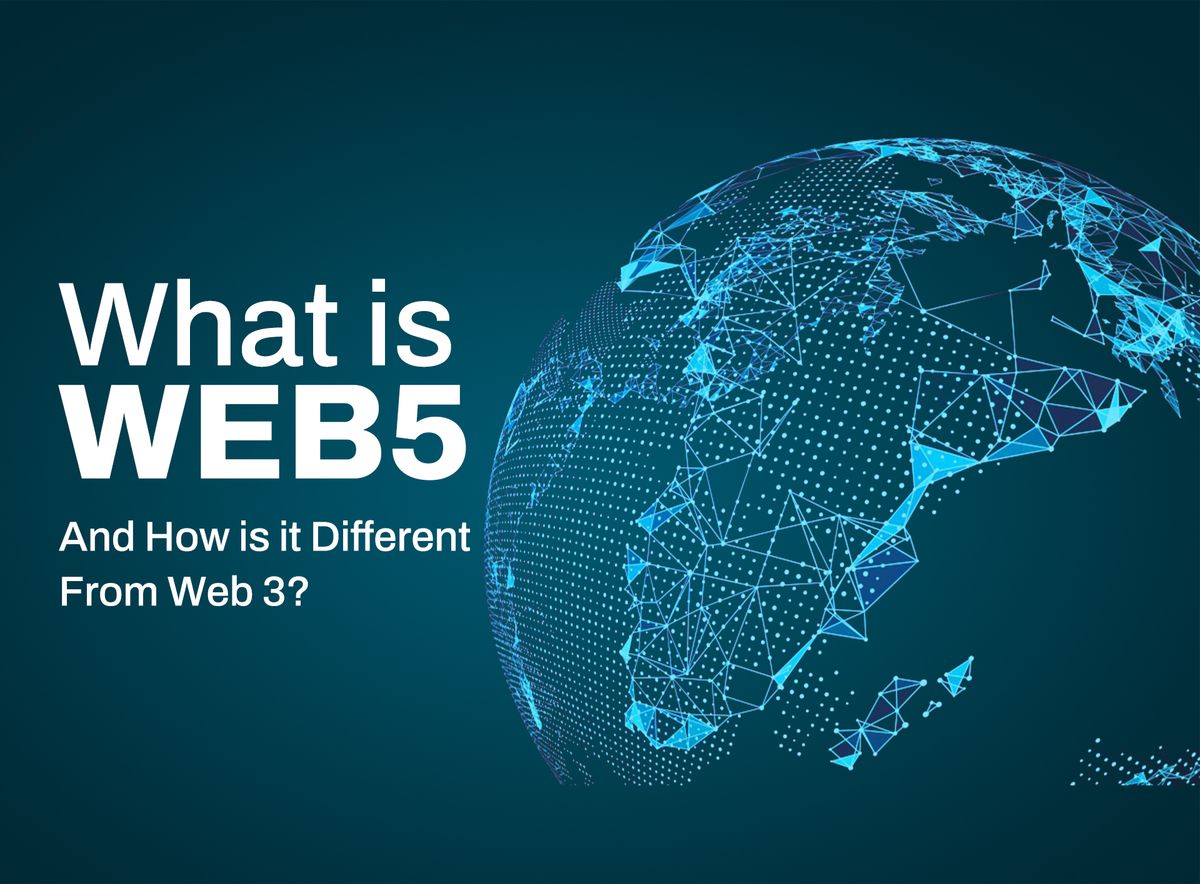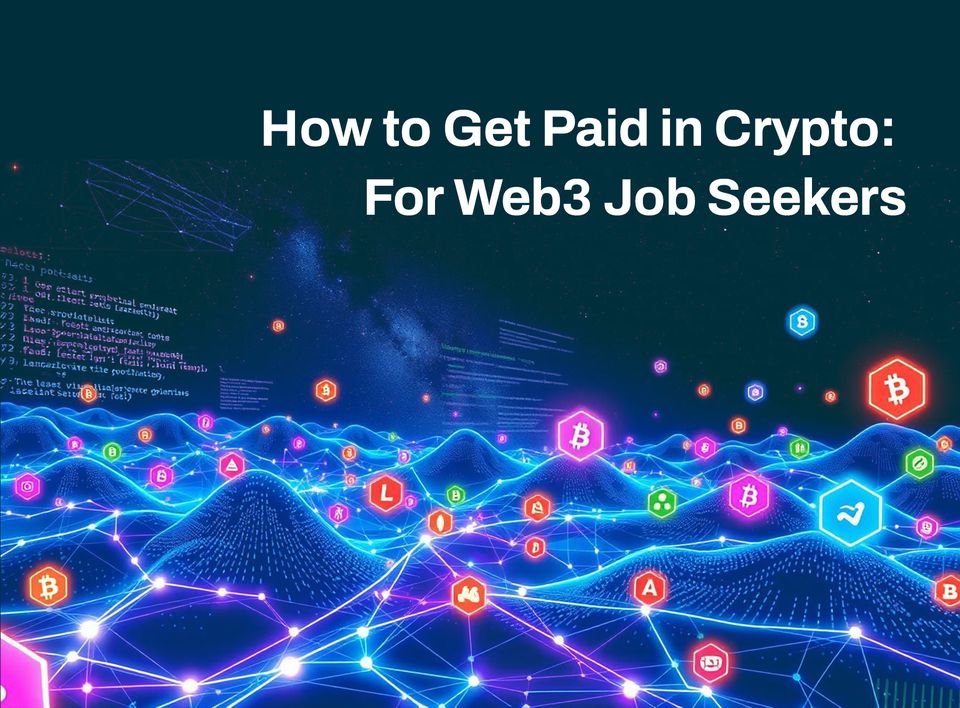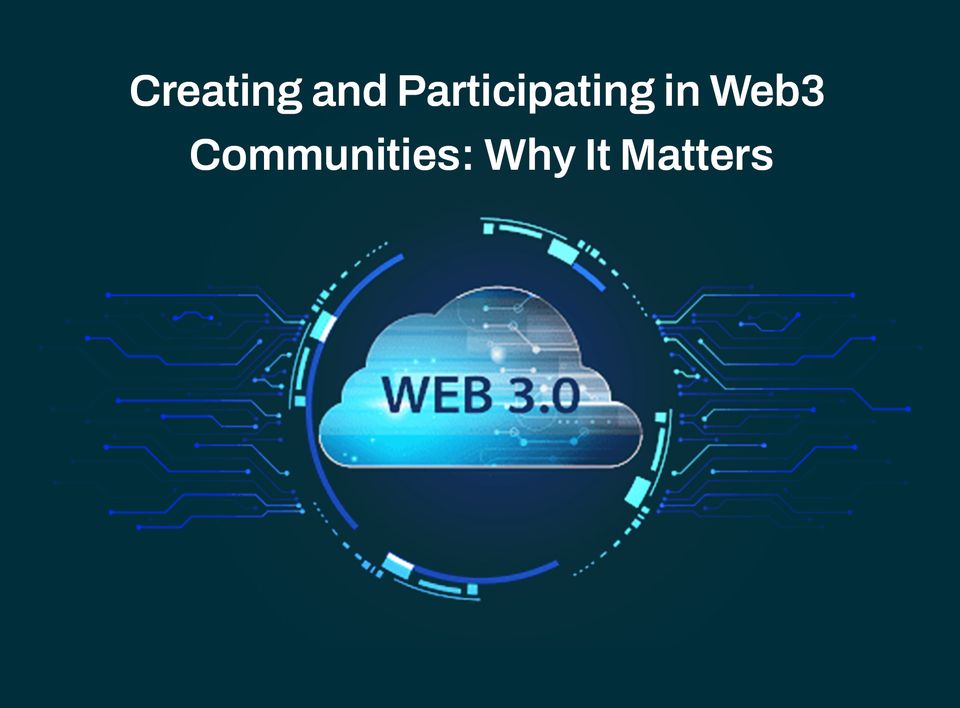What is 'Web5' and How is it Different from Web3?
Web5 focuses on user control over data and identity, while Web3 focuses on decentralised applications and blockchain technology.

TABLE OF CONTENTS:
1. Introduction
2. What is Web3?
3. Features of Web3
4. What is Web5?
5. How Did Web5 Come About?
6. Features of Web5
7. Web5 vs Web3: The Differences
8. Web5 Crypto: The Role of Cryptocurrency in Web5
9. Closing Thoughts
10. FAQs
Introduction
The Internet has undergone several stages of development over time, from the introduction of Web 1.0 and Web 2.0 to Web 3.0, each of which brought new features and capabilities.
However, it may seem as though Web 3 has begun to lose its “celebrity” status because, just like older things start to receive lesser attention when new ones come aboard, the latest buzz on the internet seems to be about a newer web version, Web5, a term introduced by Jack Dorsey, co-founder and former CEO of Twitter, Inc (before it was rebranded as X) and co-founder and chairperson of Block, Inc.
But what makes Web5 unique?
To understand what Web5 is and how it differs from Web3, let's first establish what Web3 is and its characteristics.
What is Web3?
Web3, sometimes called Web 3.0, is the third generation of the World Wide Web (WWW) in the evolution of the internet. While the current version of the internet, Web2, focuses on user-generated content and social media, Web3 aims to create a more decentralised and user-controlled online environment.
Web3 uses blockchain technology to give people more control over their data and online interactions. Instead of relying on big companies like Google or Facebook to manage everything, Web3 allows for direct peer-to-peer user interactions. This means that users can own their digital identities and assets without intermediaries.
Using blockchain, Web3 ensures that transactions and data are secure, transparent, and tamper-proof.
Features of Web3
1. Decentralisation:
Web3 operates on a decentralised network of computers instead of relying on centralised servers. This means data or services are not controlled by a single authority, reducing the risk of censorship and giving users more control. For instance, platforms like Ethereum allow developers to build decentralised applications (dApps) that run on a global network of nodes.
2. Ownership of Data:
In Web3, users have full ownership of their data. Instead of Facebook or Google owning and monetising your information, blockchain technology ensures you retain control over your data. This could lead to a more private and secure online experience.
3. Smart Contracts:
Smart contracts are self-executing contracts with the terms directly written into code. They automatically execute actions when predefined conditions are met, removing the need for intermediaries. For example, in decentralised finance (DeFi), smart contracts can automate financial transactions like lending or trading without requiring banks or brokers.
4. Tokenisation:
Web3 introduced the concept of tokenisation, where real-world assets or digital goods can be represented as tokens on a blockchain. These tokens can be traded, sold, or used within dApps. Cryptocurrencies like Bitcoin and Ethereum are examples of tokens, but this concept extends to digital art (NFTs), real estate, and even personal identities.
5. Interoperability:
Web3 aims for interoperability, meaning different blockchain networks and applications can work together seamlessly. This is achieved through protocols and standards that transfer data and value across various platforms. For instance, users can move assets from one blockchain to another without needing a centralised exchange.
6. Privacy and Security:
Web3 enhances privacy and security through cryptographic techniques. Transactions and data are secured by encryption, making it difficult for hackers to alter information. Thanks to technologies like zero-knowledge proofs, users can interact with dApps and make transactions without revealing their identity.
What is Web5?
Web5 is a new concept introduced by Jack Dorsey, the co-founder and former CEO of Twitter, Inc. It represents the next evolution of the internet, building on the principles of Web3 but aiming to address some of its limitations.
While Web3 focuses on decentralisation through blockchain technology and cryptocurrencies, Web5 expands its horizon by focusing on three core pillars: decentralised identifiers (DIDs), verifiable credentials, and decentralised web nodes.
Decentralised identifiers (DIDs) are unique digital identities that are not tied to any centralised authority, allowing users to have complete control over their personal information. Verifiable credentials are tamper-proof digital documents that can be securely shared and verified, making online interactions more trustworthy. Decentralised web nodes are data storage systems that enable individuals to store their data independently, rather than relying on centralised servers. By combining these three elements, Web5 aims to provide a more secure, private, and user-centric internet experience.
Web5 Jack Dorsey has emphasised that this new web aims to empower individuals by giving them ownership of their digital presence. The idea is to combine the best aspects of Web3 and traditional web technologies to create a more open and user-friendly Internet.
Web5 Crypto will play a significant role in this new ecosystem, aiding transactions and ensuring security. The main difference in the “Web5 vs Web3” debate is this enhanced focus on user control and data ownership. It's basically a vision for a better, more decentralised internet that puts users first.
How Did Web5 Come About?
Web5 came about as a result of the innovative vision of Jack Dorsey and his team at TBD. He introduced the concept as a new evolution of the internet, focusing on decentralisation and user control.
The concept of Web5 emerged from the growing concerns over data privacy, security, and the monopolistic control that big tech companies have over the Internet. Jack Dorsey and his team at TBD, a division of Block, developed Web5 to empower individuals through decentralised web services. This new web transformation eliminates the need for intermediaries, giving users direct control over their online interactions.
When comparing Web5 and Web3, it's clear that both aim for a decentralised internet, but Web5 focuses more intensely on user ownership and control. Web3, while also decentralised, still involves some level of reliance on intermediaries for specific functions.
Features of Web5
1. Decentralised Identity (DID):
With Web5, your identity is not tied to a single platform, making it more secure and private. For example, instead of logging into different websites with multiple usernames and passwords, you would use a single, secure identity you control.
2. Decentralised Web Nodes (DWNs):
With DWNs, you own your data and can share it with others without depending on centralised servers. This ensures that your information is safe from hacks and unauthorised access.
3. Verifiable Credentials:
With Web5, you could use a verifiable digital version instead of showing your physical ID card. These credentials are secure and can be easily verified by others, making online transactions and interactions more trustworthy.
4. Enhanced Privacy:
Unlike Web2, where companies can track and use your data, Web5 ensures that your personal information remains private. This is achieved through advanced encryption methods and decentralised storage, reducing the risk of data breaches and unauthorised access.
5. User Control Over Data:
In Web5, you can decide what information to share, who to share it with, and how it is used. This feature contrasts sharply with Web2, where companies often have control over user data. With Web5, you can revoke access to your data at any time, giving you greater autonomy and security.
Web5 vs Web3: The Differences
To better understand the differences between Web3 and Web5, let's look at a comparison of their features:
Web5 Crypto: The Role of Cryptocurrency in Web5
Cryptocurrencies may not be what Web5 is centred around, but they are a means of payment and a fundamental part of how the web operates. For instance, cryptocurrencies enable decentralised finance (DeFi) applications, where users can lend, borrow, and trade assets without traditional banks. This is a major shift from Web3, which focused primarily on decentralised applications (dApps) and smart contracts. In Web5, cryptocurrencies will power these dApps more efficiently, allowing for greater security, privacy, and control over personal data.
Web5 also aims to improve identity verification and data storage using blockchain, making the internet more secure and user-friendly. For example, a user could have a single, secure blockchain identity instead of using multiple passwords for different sites. This identity could be verified using cryptocurrencies, making transactions and interactions safer and more streamlined.
This means that in Web5, cryptocurrencies will be used not only for financial transactions but also for ensuring secure data exchanges and managing decentralised identities. For instance, users could use Web5 crypto to buy goods and services, similar to current cryptocurrencies. Still, they could also use it to verify their identity across various platforms without relying on a central authority. This dual functionality marks a significant evolution in how cryptocurrencies are utilised, setting Web5 apart from Web3.
Jack Dorsey's vision for Web5 includes a seamless integration of these elements, making Web5 Crypto a backbone for the next evolution of the internet. Compared to Web3, Web5 offers more advanced use cases for cryptocurrencies, emphasising user autonomy and data ownership.
Closing Thoughts
Now that you understand what makes Web5 unique and different from Web3, what are your thoughts? Do you believe that Web5 would be able to achieve all it is proposing? Are you excited about the future of Web3 and its possibilities, or are you sceptical that it would do more harm than good? The only answer to this question is time will tell.
FAQs
Q1. What is Web5?
A1. Web5 is a decentralised internet concept introduced by Jack Dorsey to give users more control over their data and identities.
Q2. Who is behind Web5?
A2. Jack Dorsey, co-founder and former CEO of Twitter and CEO of Block, is the main proponent of Web5.
Q3. How is Web5 different from Web3?
A3. Web5 focuses on user control over data and identity, while Web3 focuses on decentralised applications and blockchain technology.
Q4. What role do cryptocurrencies play in Web5?
A4. Cryptocurrencies in Web5 are used for secure transactions but are not as central as in Web3.
Q5. What are the key features of Web5?
A5. Decentralisation, user control, security, and privacy.
Q6. What are the key features of Web3?
A6. Blockchain-based transactions, decentralised applications (dApps), cryptocurrencies, and smart contracts.
Q7. Why was Web5 created?
A7. To address data control and privacy in previous versions of the web.
Q8. What are decentralised protocols?
A8. Protocols that operate without a central authority, allowing for peer-to-peer interactions.
Q9. Will Web5 replace Web3?
A9. Web5 aims to improve upon Web3, but both can coexist and serve different purposes.
Q10. What is the future of Web5?
A10. Web5 aims to provide a more secure, private, and user-controlled internet experience, and its technology and applications are continually developed.
Disclaimer: This article was written to provide guidance and understanding. It is not an exhaustive article and should not be taken as financial advice. Obiex will not be held liable for your investment decisions.




